Overflowing rivers sweep away lives, livelihoods
As India continues to discharge dam water, Pakistan’s measly drainage and meteorological system struggles to keep up
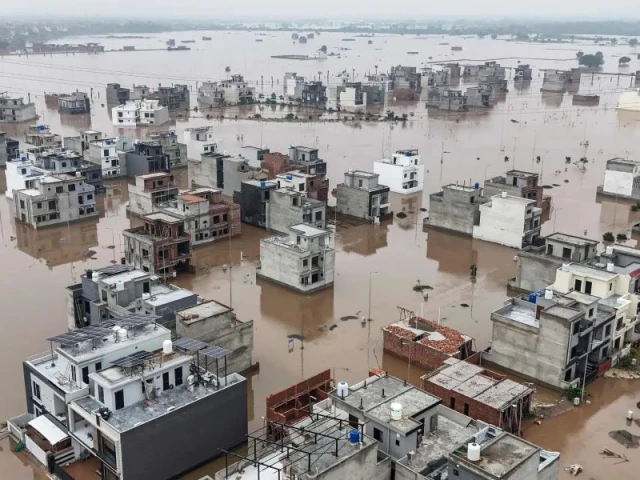
“The Ravi has returned.” Over the past few days, a picture circulating over social media shows the Ravi river flowing peacefully in the peripheries of the Badshahi Mosque after centuries. While some can afford to sit in their homes and marvel in the nostalgia of the river reclaiming its historic route, over a million stranded flood victims see only grief and tragedy.
This year, unusual monsoon rains, flash floods in the northern regions and the sudden release of water from India have pushed the water in the three major eastern rivers to dangerously high levels. The Ravi, flowing on the banks of Lahore, has once again shown its old ruthless appearance. Together with the Sutlej and Chenab, the three rivers have submerged large areas of land across Punjab.
Near Lahore, 184,000 cusecs of water were recorded at Shahdara and 144,000 cusecs at Balloki, putting the city and the suburbs of the Ravi at a high risk. In Chenab, the melting of glaciers and heavy rains raised water levels instantaneously, drowning villages as far as Gujrat, Mandi Bahauddin and Hafizabad. Likewise, rising water levels in the Sutlej, inundated villages in Kasur, Okara and Pakpattan.
Although operations conducted across the province allowed the timely evacuation of over 625,000 people, nearly 597,000 others remained trapped in their flooded homes and had to be rescued. Currently, 3,500 people are being provided food in the relief camps set up on the outskirts of Lahore alone. As of September 1st, 216 people have been killed and 625 injured due to the floods in Punjab.
A 70-year-old woman residing in a housing society located on Multan Road revealed that the floodwater had inundated her entire house, sweeping away the costly trousseau items of her daughter. Unlike the old lady, who refused to evacuate her house, Mehboob, another flood affectee took precautionary measures by taking shelter at a relative’s place, after the rising floodwater levels submerged his house.
The current calamity hit Pakistan's Punjab when India, after unilaterally suspending the Indus Waters Treaty, refused to issue a timely flood warning to its neighbour despite the gate failure at Madhopur Headworks. As a result, the sudden huge outflow severely damaged the lower belts of the Ravi and Sutlej. Considering Pakistan's inadequate water storage capacity of just 13.35 million acre feet, the unanticipated deluge wreaked havoc in the low-lying areas.
However, India alone cannot be blamed for the flood tragedy, which is a clear indication of the long-standing shortcomings of our own system. In fact, meagre floodplain management, illegal settlements and a lack of coordination between institutions like the Provincial Disaster Management Authority (PDMA), Water and Power Development Authority (WAPDA), Meteorological Department and district administration, have only multiplied the disastrous repercussions of the flood fury.
The intensity of the disaster peaked in 10 districts of Punjab, with Lahore, Kasur, Narowal, Okara, Mandi Bahauddin, Gujrat, Gujranwala, Hafizabad, Pakpattan and Sheikhupura on high alert. In eight of these districts, the Army was deployed for rescue operations. More than 1.1 million people were evacuated, but their future remains uncertain. As the floodwater continues its course from Punjab to Sindh, countless villages and small cities on the way are silently paying the price of administrative neglect.
According to Professor Dr Munawar Sabir, a geophysicist and meteorologist, the damage done to housing societies could have been abated if flood canals had been built around cities. “Housing societies should be obliged by the government to construct parks six to seven feet below the ground level to allow water to collect. Furthermore, if the correct planning is done in time, artificial flood canals could be constructed to direct water away from settlements,” opined Dr Sabir.
In the coming days, the challenges facing deluged areas and flood-affected victims will only be mounting. With a significant percentage of agricultural land now under water, the yield of crops such as rice and cotton is expected to drop, diminishing export revenue. Furthermore, stagnant floodwater itself risks instigating a public health crisis, as multiple water and vector-borne illnesses might break out among the affectees.
Punjab Board of Revenue Chief and Relief Commissioner Nabeel Javed assured that the government was carrying out relief work. “Once this is over, the damage will be assessed and the people will be compensated,” said Javed.


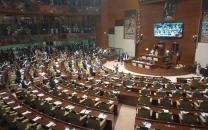
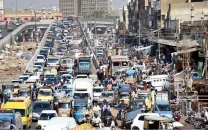

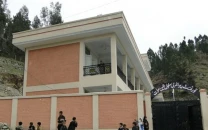






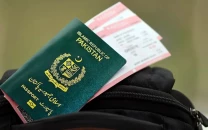







COMMENTS
Comments are moderated and generally will be posted if they are on-topic and not abusive.
For more information, please see our Comments FAQ